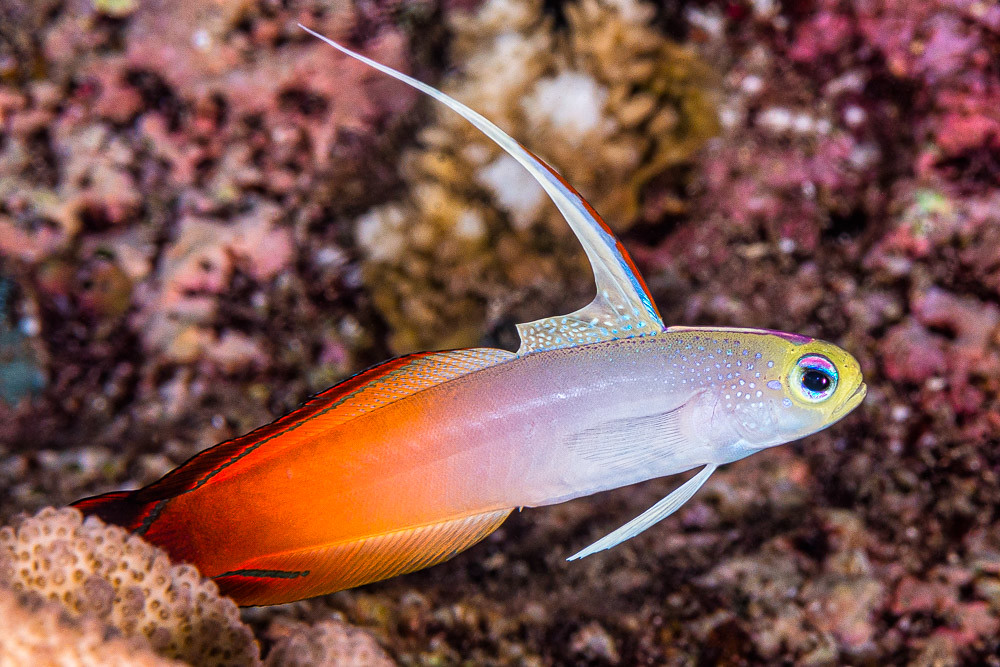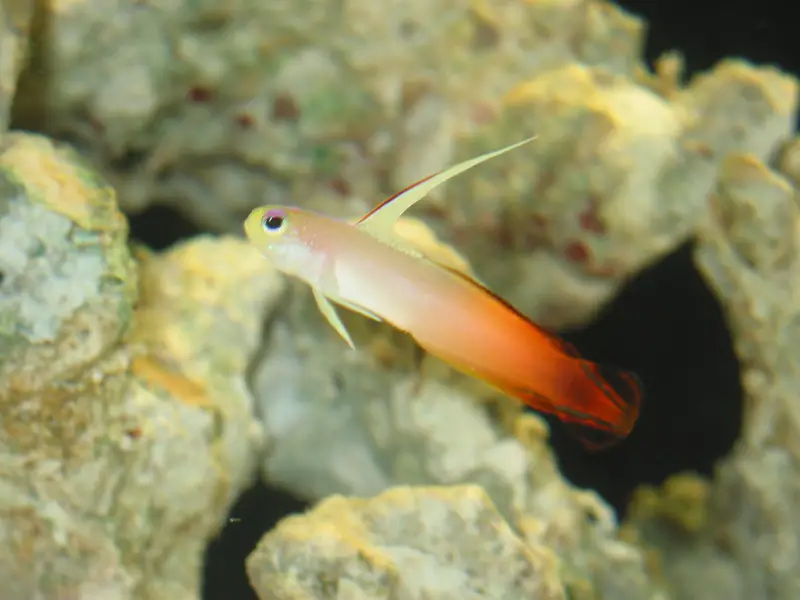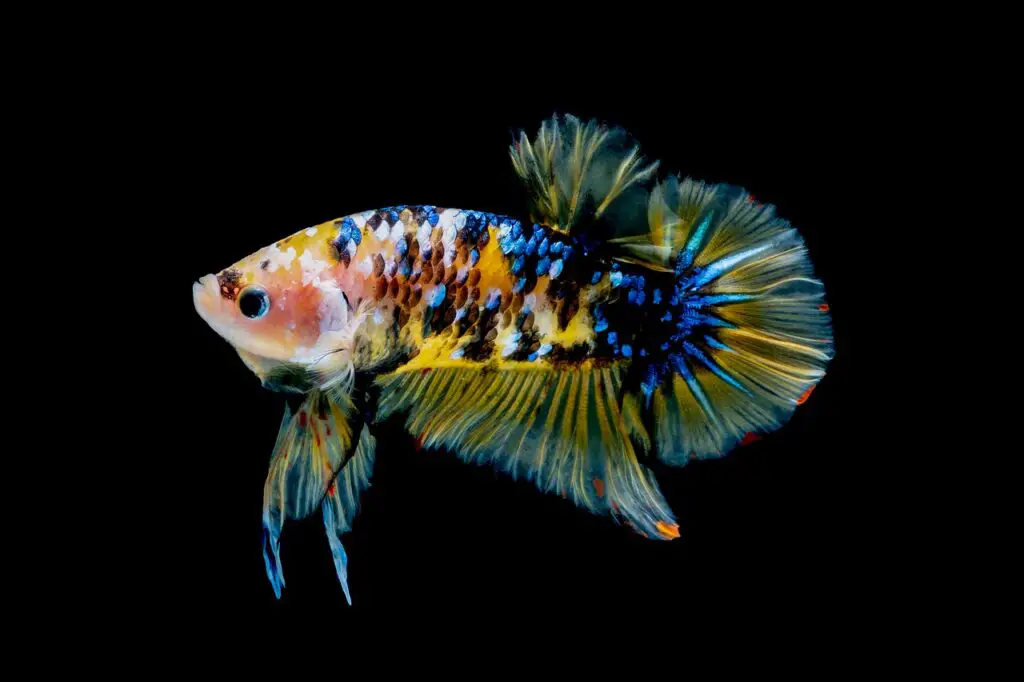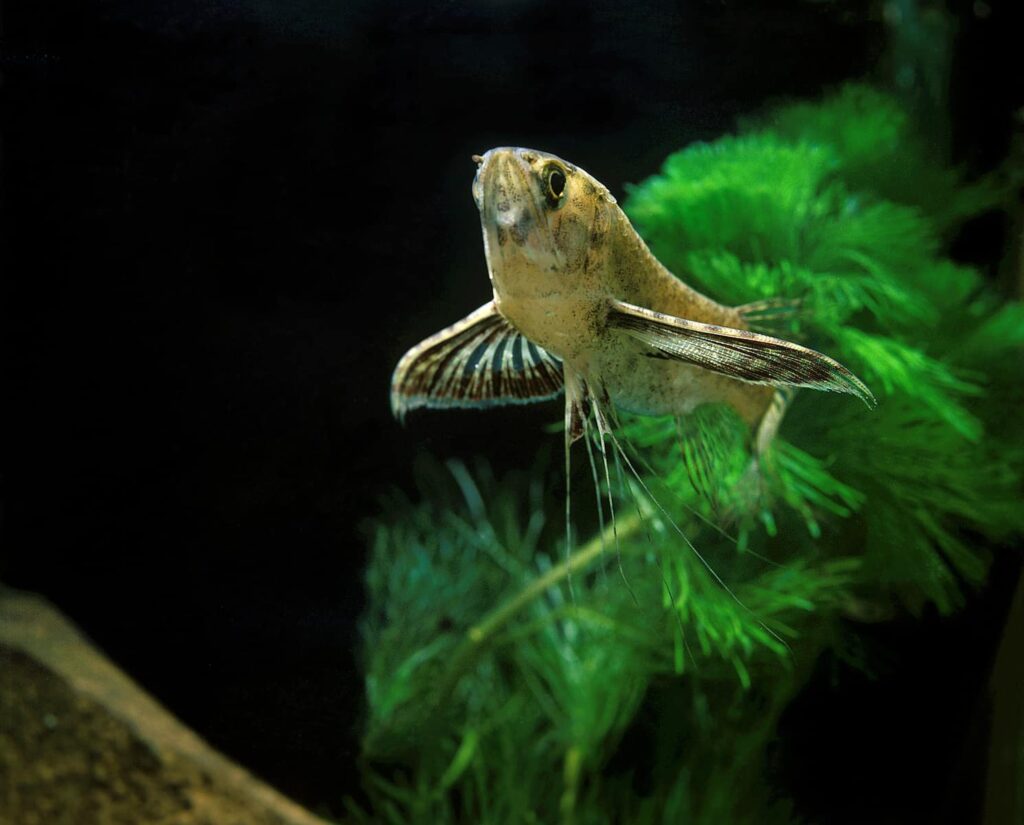These brilliant saltwater fish are sometimes called magnificent dartfish! There’s a reason for that – they are some of the most spectacular little critters to host in your saltwater tank. They are also brilliant starter pets.

In this guide, we will take a look at everything you need to know about these fish and why they can be some of the most rewarding creatures you’ll host in your aquarium.
Quick Facts:
- Fish Lifespan: Up to 3 Years
- Tank Size: At Least 20 Gallons
- Water Temperature: Between 72 and 80F
- pH: Between 8.1 and 8.4
- Hardness: Between 8 and 12 dGH
- Compatibility: Compatible with Clownfish, Damsels, and Cardinalfish
- Fish Size: Up to 3 Inches
How do you take care of firefish?
Firefish are some of the most delightful little swimmers you’ll ever hope to host in your tank. They are immensely popular with the fish keeper community in general, and they are normally one of the first species that come recommended to beginners. This is because their needs aren’t particularly strenuous, and what’s more, you won’t normally expect them to cause much of a scuffle. In fact, they are extremely docile.
That’s why it makes sense to have some form of safety zoning in your tank for the firefish. They will want somewhere to hide and to duck in and out of where possible. This is especially worthwhile if you are going to house them with damselfish, for example! As a goby, you can also expect to house these fish safely around others of different species, though they may not always get on too well with members of their own family! You can, however, mate firefish easily, and many will choose to mate for life.
All firefish are highly energetic despite their shy tendencies, and for this reason, you must make sure you have a large tank so that they can freely dash about as and when they want to. What’s more, you absolutely must put a lid on your tank! If you don’t, you might be at risk of losing firefish altogether – as they can have the tendency to leap out of the water! Putting a lid on them stops this from happening, of course.
These fish are carnivorous, so try to avoid mixing them with any species which are smaller than them. It’s worth feeding these beasties on meaty morsels such as shrimp, though vitamin enriching brine is also a good idea.
Overall, keeping firefish is a really fun experience. They are lovely to watch and to look after, and as they are so mild-mannered and so undemanding beyond the essentials, we highly recommend them for your first tank.
Are Firefish aggressive?
Firefish are hardly ever aggressive. They will only tend to show aggression towards their own kind if they feel threatened or territorial.

However, they can mate well together and tend to couple up, so these behaviours don’t always run common. They tend to get on very well with other timid fish providing they are the same size or larger, given their carnivorous nature.
Firefish can, however, find themselves on the receiving end of bullying from the likes of damselfish. It’s entirely possible and potentially safe to house damsels and firefish together. However, if you’re a beginner at keeping saltwater fish, we probably advise only choosing one of the two species to look after in the first instance.
How much does a Firefish cost?
Firefish tend to be fairly mid-priced on the whole, not the most common of saltwater creatures, but at the same time, they aren’t priceless rarities, either.
Try and look for prices of around 20 or less for these fish – this tends to be a reasonable price tag, though you should be able to set your own budget depending on how much you really want to get into fish keeping!
Anything above 20 may be a little expensive, however, so we generally advise you to take a good look online and see what deals you can line up and compare.
What do Purple Firefish eat?
Purple firefish are small carnivorous creatures, meaning that they would traditionally dine on shrimp or plankton in the wild.
At home, you will normally do best to feed these critters specialist marine food as well as brine fish with vitamin enhancers. Beyond this, you might want to cast in some mysis shrimp.

It’s unlikely that firefish will cause much of a problem on the food chain as they tend to be pretty small themselves. However, it’s always a good idea to keep them with similarly sized fish and creatures so that they are unlikely to go feasting.
You can get some firefish as small as an inch long, so they probably won’t be bullying up your tank too much in the hunt for meat!
Can you keep multiple Firefish?
It is entirely reasonable to keep several firefish, but you need to keep in mind that they can scare each other!
Firefish can be very shy and timid, which means if they feel threatened, they may feel stress and sometimes lash out. However, this is often only the case when it comes to introducing them to their own kind.
You can breed firefish easily if you know how to tell the difference between their genders. You can also find firefish couples in tanks and in the wild, so they are not always aggressive towards each other.
Just like human beings, firefish can need a little space here and there sometimes. Therefore, it also makes sense to try and set up as large a tank as possible, with plenty of hiding spaces, so they can feel especially safe with somewhere to duck into.
Keep in mind the size of firefish – they can grow up to three inches long, which based on basic tank mathematics means you should ideally look for a tank of at least 30 gallons if you have two or three of them. This will help them to feel safe and will give them plenty of room to scoot around, too.
Can Firefish live with clownfish?
Yes, it is entirely possible for firefish to live with clownfish.
Clownfish don’t tend to be too aggressive unless they feel threatened, which is completely reasonable. Unlike damselfish, clownfish also tend to go about their business without feeling particularly irritable, meaning that the firefish can normally go about their daily swimming without coming under much of a threat.

Firefish will never attack a clownfish unless it really has reason to, and even then, it’s more likely going to find somewhere to hide, or it’s going to try leaping out of the tank. The best thing to do, in any case, is to seal the lid on your aquarium, as stated, and to make sure that you offer as much volume in gallons as you can – along with lots of hiding and safety nooks.
So, yes – it’s entirely reasonable for you to home clownfish and firefish without having to worry about what happens next!
Can you have 2 goby in a tank?
That all depends on the species, as gobies can, naturally, vary from type to type. As a common and really placid goby, the firefish will normally do fine with other species.
Therefore, always check the compatibility of other gobies if you really want to bring them together. Firefish probably won’t pose you any issues, and there’s no reason why they will usually show aggression towards other gobies or fish likewise.
You can have two gobies in a tank providing it’s big enough. Again, 30 gallons tends to be a good starter size on the whole, meaning you’ll be giving your fish more than enough space to flutter around in, as well as places to hide.
That, ultimately, is the end goal – to have a big enough tank to safely house your gobies, while giving them lots of opportunities to sneak away and hide if they really want or need to.
Should I adopt a Firefish?
Yes! If you are looking for a saltwater fish that’s easy to look after, has minimal tank demands, and will generally get on well with other species, then a firefish is going to be an ideal pick.
They are colourful, creative, and very active. They tend to liven up plenty of saltwater aquarium spaces despite their timidity, meaning that providing you have other fish of a similar temperament or nature, you’ll likely be able to set up a wonderful tank for them all to explore.
Just be very careful, again, when it comes to putting a lid on your tank. Gobies like firefish will, if stressed enough, choose to leap out of the water – so if you want to keep them thriving in the deep, keep them sealed in!
Gobies can live for around three years, though of course, there is always the potential for them to live longer. Give them the best tank environment possible and there are no reasons why you can’t get some fantastic experiences out of a firefish or two. Take a look and see what you can find online!



